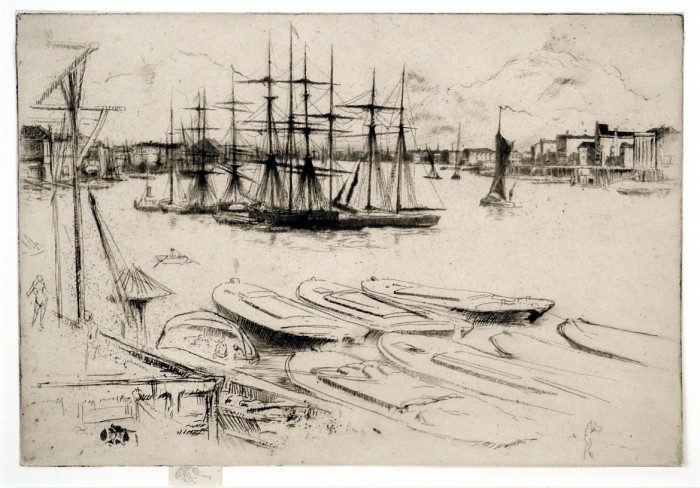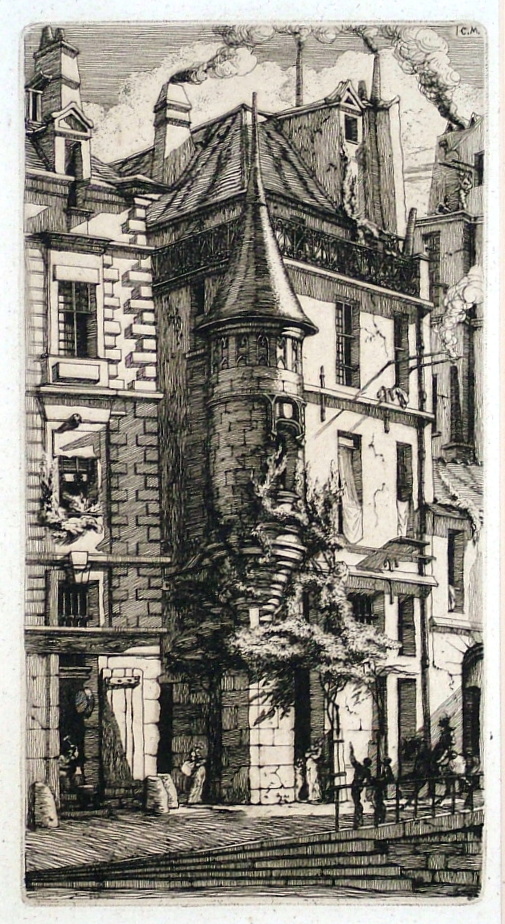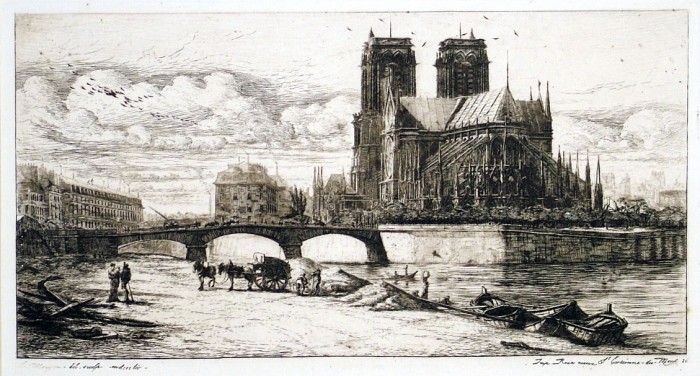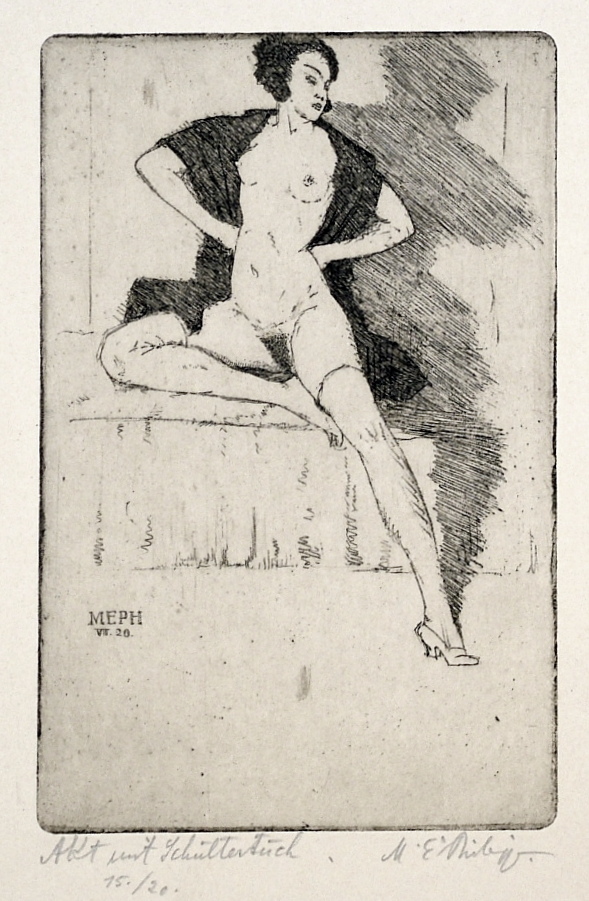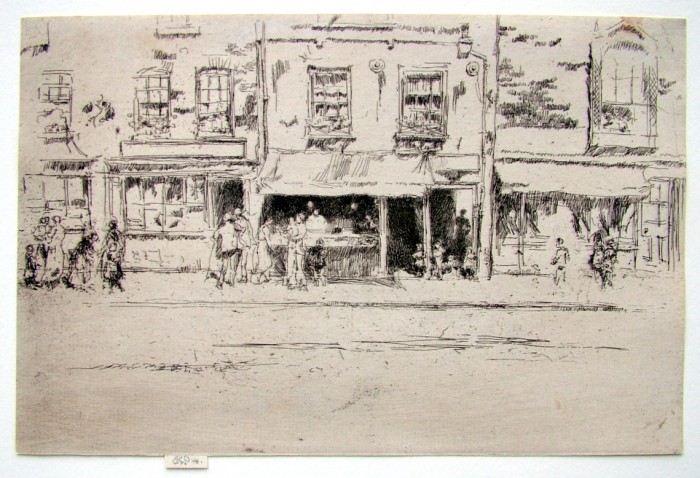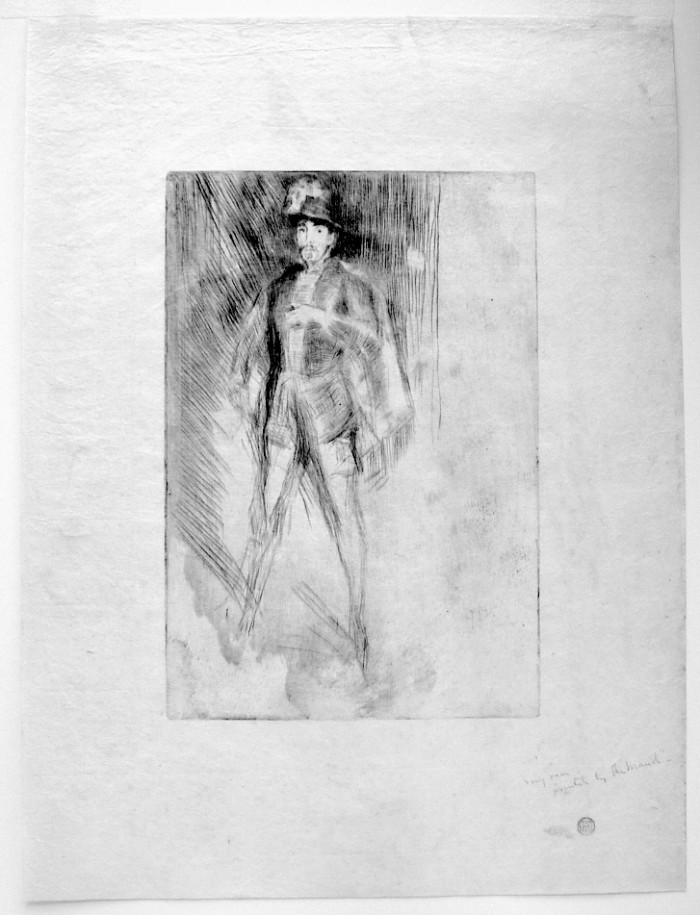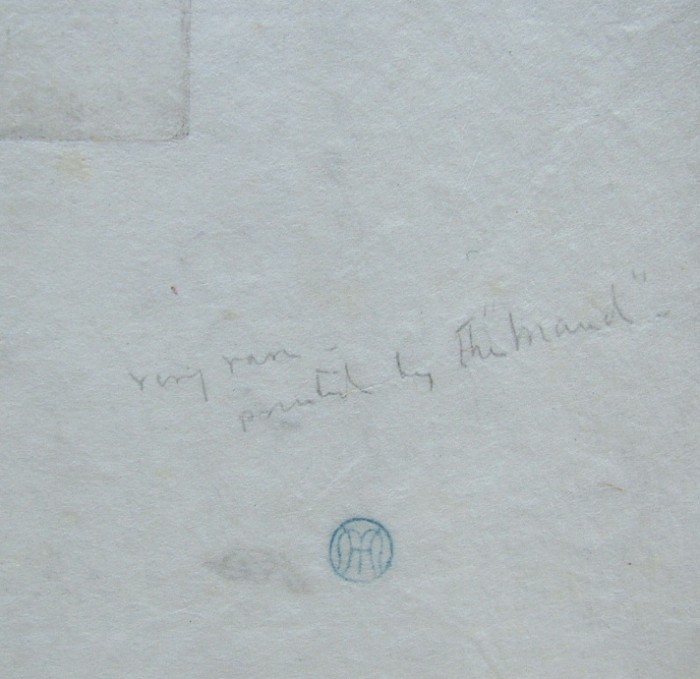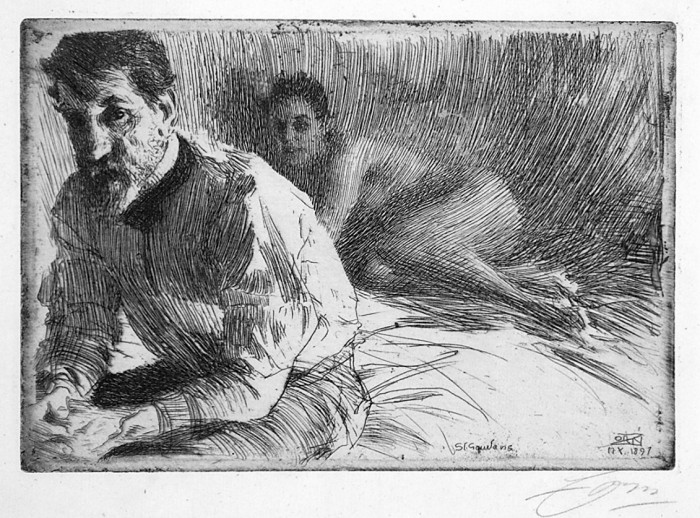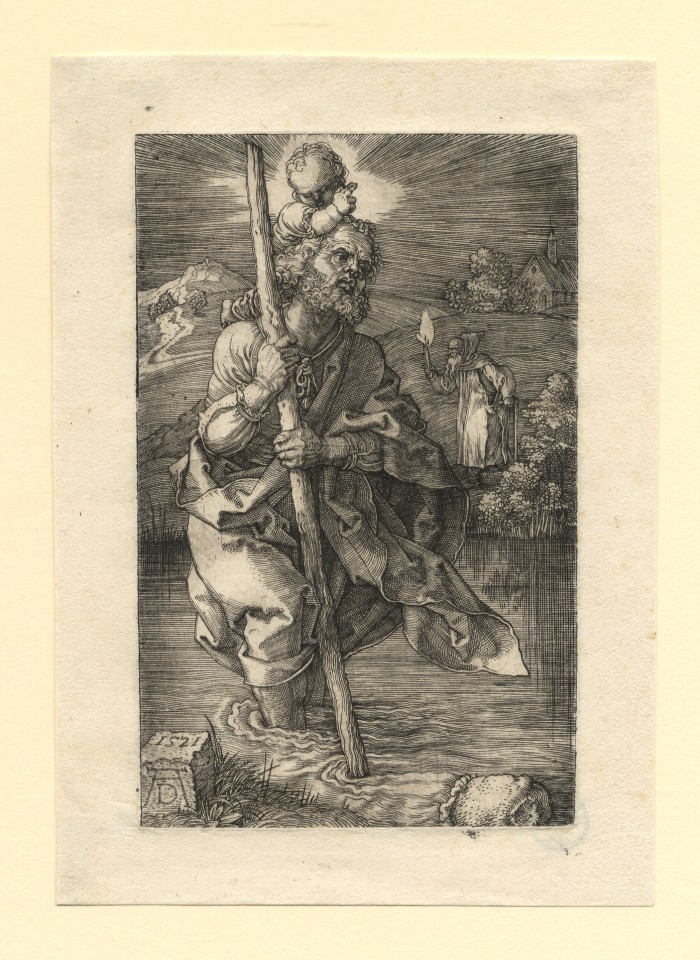Wapping, The Pool (The Large Pool)
Monday, June 24th, 2013James McNeill Whistler (1834-1903), The Large Pool (Wapping, The Pool), etching and drypoint, 1879, signed with the butterfly on the tab, [also signed with the butterfly in the plate, lower left]. References: Kennedy 174, Glasgow 180, Glasgow’s eighth state (of 8), In excellent condition, trimmed by the artist on the plate mark except for the tab, 7 1/2 x 11 inches.
Provenance:
Edward James
Robert Light & Co., Boston, then to Carolyn Crossett Rowland in April, 1988.
Printed in dark brownish/black ink on cream/ivory laid paper with the Arms of Amsterdam watermark.
A very fine impression of this extremely rare print, signed in pencil with the early large shaded butterfly (butterfly of 1879). This print was not published; the Whistler Etchings Project at Glasgow has identified 13 impressions.
The Large Pool shows the Pool of London at Wapping, the scene of several prints of the Thames done some twenty years earlier. In composition it anticipates the etchings Whistler was about to do in Venice.
According to the Glasgow catalogue Whistler apparently had a high regard for this plate, as evidenced by the care he took with selection of papers and printing of various states, and by correspondence regarding the plate; and he may have hoped it would help him avert bankruptcy. But it did not (and indeed he gave one impression to James Waddell, the accountant involved in the bankruptcy proceedings); in the end no edition of the print was made.
